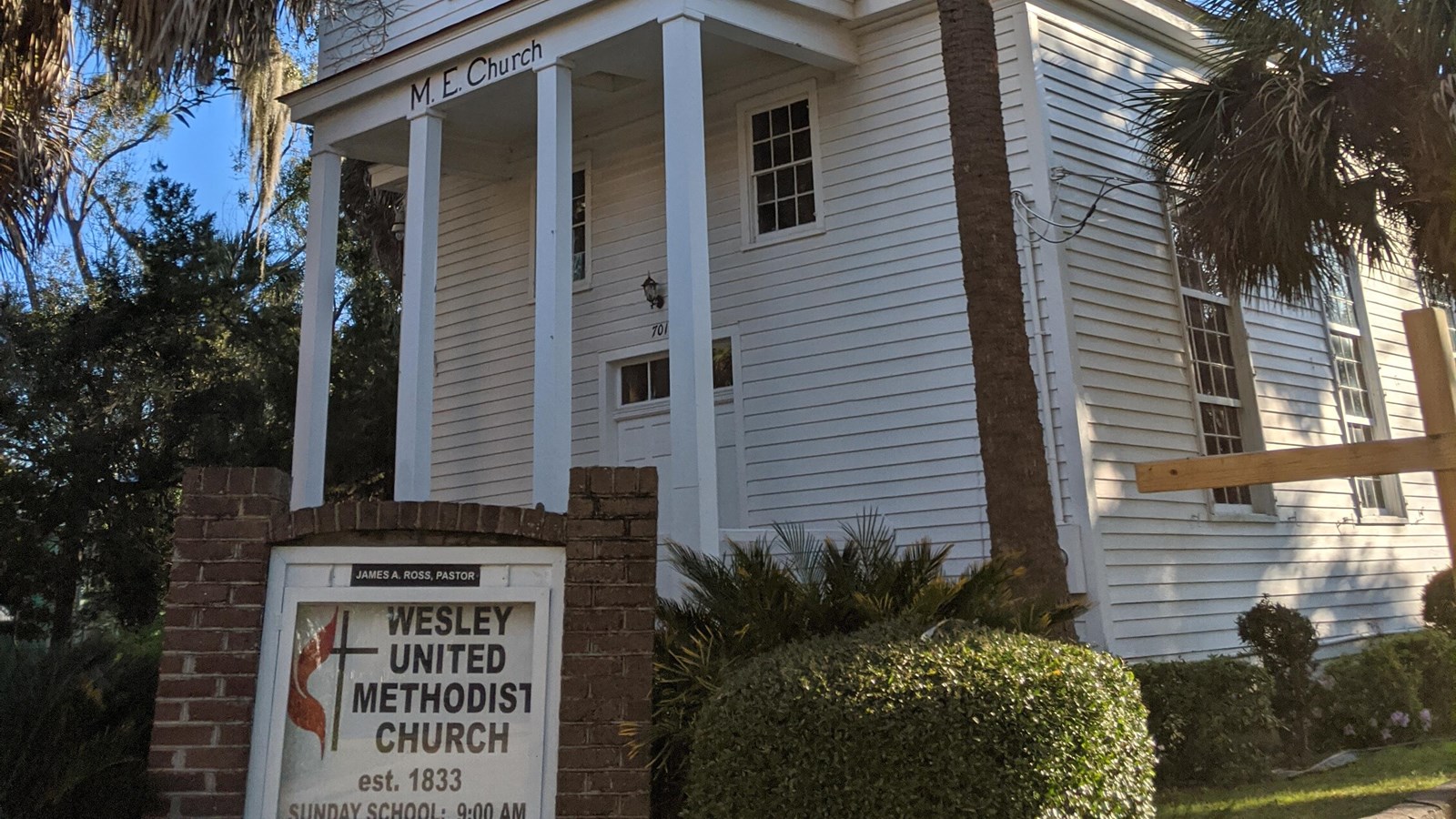Last updated: December 26, 2023
Place
Wesley United Methodist Church

NPS/C. Barr
Wesley United Methodist Church in Beaufort, South Carolina, was first built in the 1830s, but by the Reconstruction era, it became an important site for African American life in the city. Today the church remains an active congregation, and is a member of the Reconstruction Era National Historic Network.
The January 17, 1863 issue of The Free South noted that the church was being used as one of the four schools serving formerly enslaved people in downtown Beaufort. Education was one of the most important elements of the Port Royal Experiment and the Reconstruction era in general. It is likely that this school was in operation in 1862 before the official Emancipation Proclamation.
During and after the Civil War, the church continued to function as a house of worship for formerly enslaved people in Beaufort. During Reconstruction, the growth of the Black Church throughout the south was an important aspect of social and political life. Black ministers and church leaders often became involved in politics during the era. In the lead up to the 1867 local elections, Rev George Newcomb – a white minister from Massachusetts – was using Wesley UMC as his headquarters to grow the Methodist Episcopal Church, as well as the Republic Party.
The church also maintains a historic cemetery, which contains a number of graves that date to the Reconstruction era. Buried on church grounds are some of the citizens who experienced the process of emancipation, education, and civic engagement during the era.
For additional information about the church’s role in Reconstruction in Beaufort, see Rebellion, Reconstruction, and Redemption, 1861-1893: The History of Beaufort County, South Carolina, Volume 2 by Stephen R Wise and Lawrence S Rowland.
